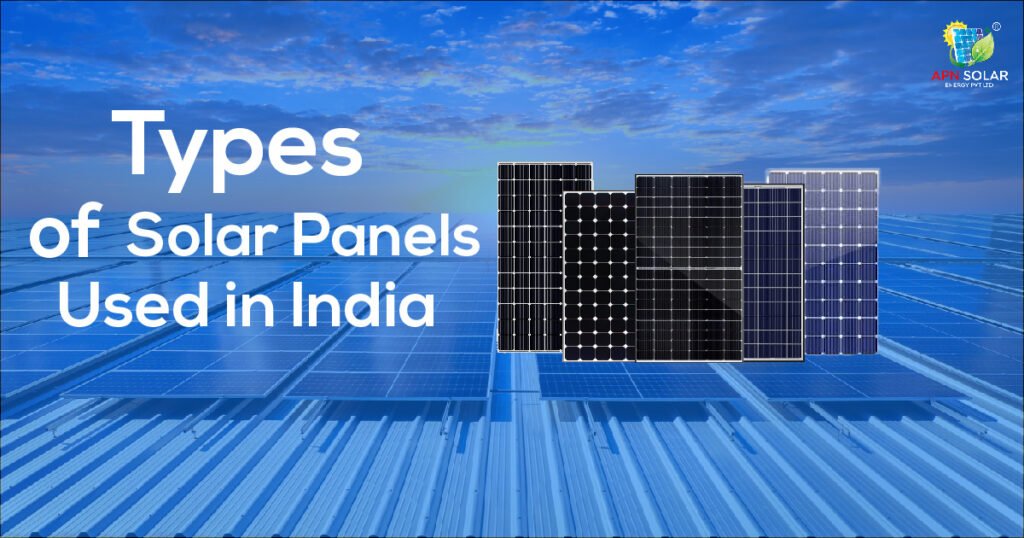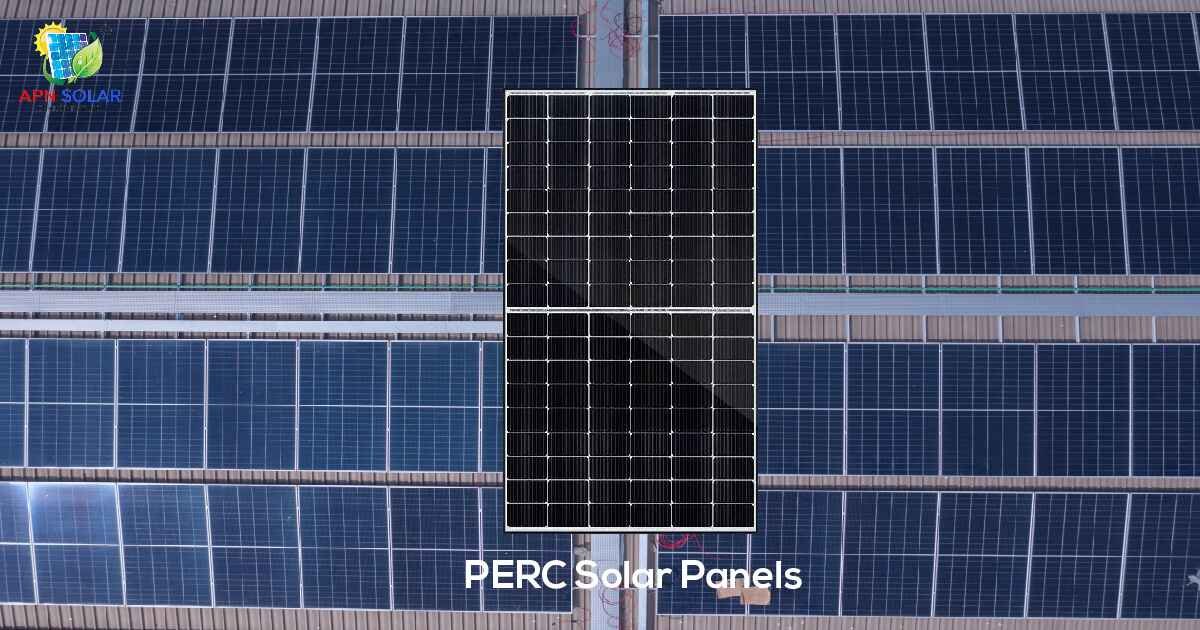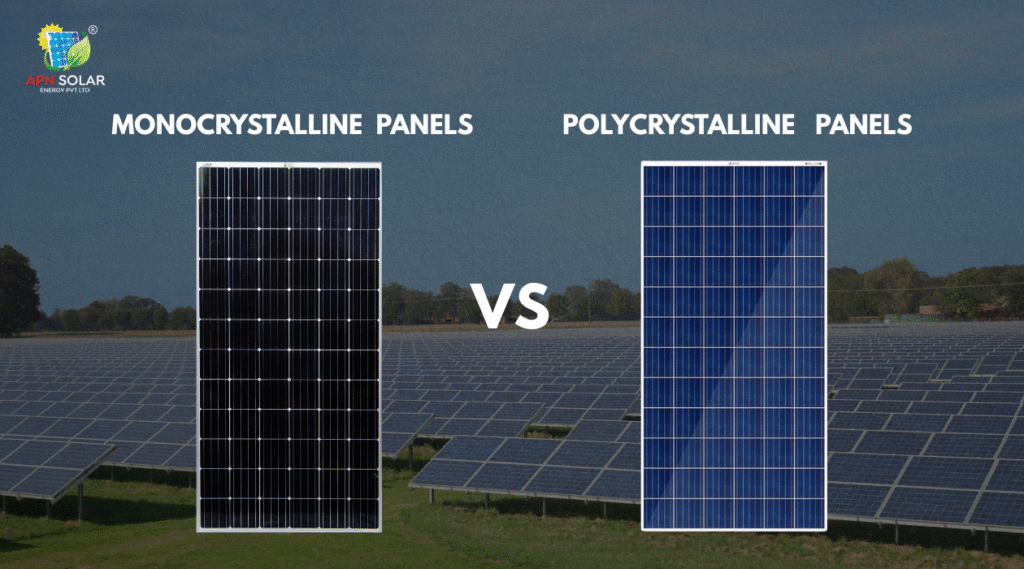India is rapidly embracing solar energy as a sustainable solution for power generation. With government subsidies and rising awareness, the demand for solar panels for homes has soared, especially in urban and semi-urban regions.
Before investing, it’s important to understand the types of solar panels in India. Each panel type whether monocrystalline, polycrystalline, or thin-film differs in efficiency, cost, and durability based on the materials and solar technology used.
Whether you’re a homeowner exploring rooftop solar or an entrepreneur entering the solar business in India, selecting the right solar panel type is critical. The right choice maximizes energy output, ensures long-term savings, and supports India’s clean energy goals.
Types of Solar Panels Used in India
With India’s diverse geography and increasing demand for renewable energy, understanding the different types of solar panels in India is crucial for making the right energy investment. Each panel type has its unique construction, efficiency rating, and ideal use case whether for residential rooftops, industrial use, or commercial projects. Here’s a comprehensive breakdown of the six core solar panel types available in the Indian market.
Monocrystalline Solar Panels
Monocrystalline panels are one of the most efficient options among the types of solar panels in India. Made from a single crystal of pure silicon, they’re known for their deep black color and high power output. These panels are ideal for rooftops with limited space because they generate more electricity per square meter.
With efficiency rates typically between 18% to 22%, monocrystalline panels perform well even in low light and high temperatures conditions common across many parts of India.
Highlights:
- High efficiency (18–22%) great for small rooftops
- Long lifespan often 25+ years
- Performs well in heat and low light
- Sleek black look preferred for aesthetics
The main downside is the higher cost compared to other panel types. But for homeowners focused on long-term value and energy savings, monocrystalline panels are often worth the investment.
To make monocrystalline panel installations more affordable, the Indian government offers subsidies for residential rooftop systems. APN Solar Pvt Ltd helps homeowners with both system setup and subsidy application through the official National Rooftop Solar Portal, making the process simple and hassle-free.
Polycrystalline Solar Panel Type & Use Cases

Polycrystalline solar panels are a popular and budget-friendly option among the various types of solar panels in India. Unlike monocrystalline panels, these are made from multiple silicon crystals melted together, which gives them a distinctive blue, speckled look.
While they’re generally less efficient with typical conversion rates between 15% and 17% polycrystalline panels still offer solid performance, especially in areas with plenty of rooftop space.
Their lower cost makes them appealing to homeowners with tighter budgets and to solar installation companies working on large-scale or government-backed projects where affordability is key.
When to Choose Polycrystalline Panels:
- You have ample roof space for more panels
- You’re looking for a cost-effective solar solution
- You don’t require the highest efficiency, but want a reliable system
In terms of durability, polycrystalline panels still offer a lifespan of 20–25 years, and they’re well-suited for most Indian weather conditions. While they may not deliver the same output per square meter as monocrystalline panels, they continue to be a dependable and widely installed choice across residential and commercial projects in India.
Thin-Film Solar Panels for Commercial Use in India

Thin-film solar panels are quite different from the traditional silicon-based types. They’re made by layering photovoltaic materials like cadmium telluride or amorphous silicon onto a flexible surface, which makes them lightweight, bendable, and easy to install in non-traditional settings.
While they’re less common in residential installations, thin-film panels are widely used in industrial projects and commercial setups where roof structure or size allows for lower efficiency but more surface coverage. They typically offer efficiency rates between 10% and 12%, which is lower than crystalline panels, but can still be cost-effective for large-scale installations.
Because of their flexibility and ease of transport, thin-film panels are also gaining interest among solar entrepreneurs exploring different solar panel business types or considering a clean energy solar business franchise to enter the renewable sector.
Why Choose Thin-Film Panels?
- Ideal for industrial or commercial roofs with lots of space
- Great for innovative or portable solar applications
- Lower production cost, but shorter lifespan compared to crystalline panels
Thin-film is best seen as a niche technology in India, but one with growing relevance as the solar industry diversifies beyond traditional rooftops.
PERC Solar Panels: Efficiency and Benefits
PERC (Passivated Emitter and Rear Cell) panels are an upgraded version of traditional monocrystalline or polycrystalline solar panels, designed to offer better efficiency and performance in real-world conditions. By adding an extra passivation layer on the rear side of each cell, PERC panels are able to capture more sunlight and reduce electron recombination leading to higher energy output.
One of the biggest advantages of PERC technology is that it performs exceptionally well in high-temperature environments, making it ideal for most regions in India. It also handles partially shaded conditions better than standard panels, which can be a key benefit for urban homes where trees, walls, or nearby buildings may cast shadows.
Many of the best solar companies in India now include PERC panels in their offerings because they strike a great balance between cost, efficiency, and long-term reliability. These panels typically offer efficiency rates of 19% to 23%, which makes them one of the top performers among current solar panel types and efficiency standards.
Why Consider PERC Panels?
- Excellent for hot climates and partial shading
- Higher efficiency without a major cost jump
- Increasingly used in both residential and commercial installations
For homeowners looking for a step up from standard panels without moving into ultra-premium territory PERC panels are often the smart middle ground.
Bifacial Solar Panel Type: Industrial Use and Output
Bifacial solar panels are an advanced technology that allows solar cells to absorb sunlight from both the front and back sides of the panel. This dual-side generation can significantly boost overall energy output especially when the panels are mounted over reflective surfaces like white rooftops, sand, or concrete.
These panels are most commonly used in utility-scale or industrial solar parks, where ground-mounted installations can be optimized for maximum reflectivity. Due to their higher upfront cost and installation complexity, bifacial panels are not yet widespread in residential settings. However, they are becoming increasingly popular in B2B solar panel business models, such as commercial rooftops, solar farms, and government-backed green energy projects.
As part of the evolving types of solar modules available in India, bifacial panels stand out for their long-term performance potential. In ideal conditions, they can produce up to 10–20% more energy than traditional monofacial panels.
Where Bifacial Panels Work Best:
- Large open spaces with reflective ground surfaces
- Commercial or industrial solar setups
- Businesses investing in high-output solar technologies
While not the go-to choice for most homes, bifacial panels are a smart solution for large-scale power needs where efficiency and energy gain per square meter are top priorities.
Amorphous Silicon Solar Panels: Lightweight Solar Module Type
Amorphous silicon panels, often referred to as a-Si panels, are a specialized subcategory within the broader family of thin-film solar panels. Unlike traditional crystalline panels, a-Si panels use non-crystalline silicon deposited in thin layers, which makes them extremely lightweight and flexible.
When it comes to the types of solar cell technologies available in India, amorphous silicon stands out for its unique applications rather than high performance. These panels have lower efficiency, usually in the range of 7% to 9%, but they make up for it with ease of handling, lower production cost, and versatility in design.
You won’t typically see a-Si panels on residential rooftops or industrial solar farms. Instead, they’re used in niche products like mobile charging kits, portable solar lights, backpacks with solar panels, and other off-grid solar system or remote-area applications. This makes them especially useful for areas where power access is limited or where mobility is important.
As solar technology evolves, types of PV cells like a-Si continue to fill important gaps in the energy landscape offering lightweight, affordable alternatives where conventional panels may not be practical.
Solar Panel Comparison Table: Type, Efficiency, Cost & Use Case
| Solar Panel Type | Efficiency Range | Cost | Best Use Case | Lifespan |
| Monocrystalline | 18% – 22% | High | Homes with limited roof space, premium installs | 25–30 years |
| Polycrystalline | 15% – 17% | Medium | Budget-friendly homes, projects with ample space | 20–25 years |
| Thin-Film | 10% – 12% | Low | Industrial/commercial roofs, lightweight structures | 10–20 years |
| PERC | 19% – 23% | Medium to High | Hot climates, shaded areas, residential/commercial | 25–30 years |
| Bifacial | 18% – 24% (combined) | High | Utility-scale projects, reflective ground areas | 25–30 years |
| Amorphous Silicon (a-Si) | 7% – 9% | Low | Portable gadgets, mobile kits, off-grid areas | 5–10 years |
Efficiency Comparison: Which Solar Panel Performs Best in India?
When it comes to choosing the right solar panel, efficiency is one of the most important factors to consider, especially in India, where climate conditions vary dramatically. Efficiency refers to how much sunlight a panel can convert into usable electricity, directly impacting how much power your system will generate over time. Higher efficiency panels may affect the solar panel installation cost in India, so it’s important to understand both performance and pricing before making a decision.
Here’s a quick look at the typical efficiency ranges for the main types of solar panels in India:
- Monocrystalline: 18% – 22%
- Polycrystalline: 15% – 17%
- PERC: 19% – 23%
- Thin-Film: 10% – 12%
- Bifacial: 18% – 24% (combined surface output)
- Amorphous (a-Si): 7% – 9%
India’s hot summers, dusty environments, and seasonal shading can influence real-world performance. Panels with higher heat tolerance like PERC and monocrystalline tend to perform better in these conditions, maintaining stable output even during peak summer months. That’s why many of the top solar panel brands in India now promote these as their flagship products.
For homeowners, choosing a high-efficiency panel doesn’t just mean faster energy generation it also means fewer panels needed, lower space requirements, and better long-term returns. That said, efficiency isn’t everything. It should be considered alongside cost, available space, and energy needs.
Which Type of Solar Panel is Best for Home Use in India?
When you’re planning to go solar, choosing the right type of panel is one of the most important decisions you’ll make. In India, where rooftop sizes vary and weather conditions can be unpredictable, the best panel for your home depends on your energy goals, budget, and available space.
For homes with limited rooftop area, monocrystalline solar panels are usually the top recommendation. Their high efficiency (typically 18–22%) means they can generate more electricity in less space. They’re a great option for urban homes or apartments with smaller rooftops.
If space isn’t a constraint and you’re looking for a cost-effective solution, polycrystalline panels might be a better fit. While they have slightly lower efficiency (around 15–17%), they’re reliable and more affordable perfect for suburban or rural households. When comparing monocrystalline vs polycrystalline panels, it comes down to whether you prioritize efficiency and space or budget and value.
PERC panels are also a strong contender, especially in regions that experience high temperatures or partial shading. These panels are designed to deliver better output in tough conditions, making them increasingly popular across Indian homes.
Quick Summary:
- Monocrystalline – Best for compact rooftops, high efficiency, higher price
- Polycrystalline – Ideal for large roofs, lower cost, moderate efficiency
- PERC – Performs well in heat and partial shade, excellent balance of cost and efficiency
To make the right choice, it’s always smart to speak with a trusted professional. APN Solar Pvt Ltd, widely recognized as the best solar company in India, offers personalized advice and end-to-end installation based on your home’s unique conditions.
Need help deciding?
Contact APN Solar directly at sales@apnsolar.com to get a free consultation and expert advice on choosing the perfect solar panel setup for your home.
Frequently Asked Questions:
1. What are the different types of solar panels available in India, and how do they compare?
India primarily uses monocrystalline, polycrystalline, thin-film, PERC, bifacial, and amorphous silicon panels. Each type varies in efficiency, cost, and design. A quick solar panel comparison helps determine the best fit based on space, budget, and climate.
2. Which type of solar panel is most suitable for Indian weather conditions?
Monocrystalline and PERC panels are highly efficient and perform well in high temperatures, making them ideal for Indian climates. Their solar cell models handle heat better than others, maintaining consistent output in sunny and humid regions.
3. How do monocrystalline and polycrystalline panels differ in performance and cost?
Monocrystalline panels offer higher efficiency and a longer lifespan but are more expensive. Polycrystalline panels are cost-effective and widely used. Both are reliable, but the solar panel model you choose depends on roof space and budget.
4. Is it worth investing in high-efficiency solar panels for home use?
Yes, especially if you have limited rooftop space. High-efficiency panels require fewer units and offer better long-term savings. Check solar panel ratings from the Bureau of Indian Standards (BIS) to ensure you’re investing in quality solar panels for home use.
5. What is the expected lifespan of different types of solar panels?
Most panels last 20–30 years depending on the solar cell classification and build quality. Monocrystalline and PERC panels tend to last longer than thin-film or amorphous types, provided proper installation and maintenance are ensured. Regular solar cleaning also plays a crucial role in preserving long-term efficiency and output.
6. How do solar panel ratings affect long-term performance?
Solar panel ratings indicate power output, efficiency, and durability. Higher-rated panels typically perform better under varied weather conditions, ensuring more stable energy generation and lower maintenance costs over time. Always choose certified models with proven performance.
7. Can I upgrade my existing solar panel system with better technology later on?
Yes, solar systems can be upgraded by adding panels or replacing inverters. As second-generation solar cells and PERC technologies become mainstream, homeowners can improve efficiency without reinstalling the full system especially if space and electrical design allow.








I am interested in doing business with you.
For any inquiries, please email us at sales@apnsolar.com or call our toll-free number: 1800 202 6150.
How are panels and inverters or circuits related to the efficiency and continuity of production?
For any inquiries, please email us at sales@apnsolar.com or call our toll-free number: 1800 202 6150.